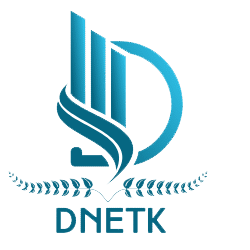- Structural Engineers & Architects: For staying updated on inspirational / challenging projects, learning design strategies, structural systems, innovative material use.
- Engineering Students: To learn via case studies, visual breakdowns of real structures, strengthen their conceptual understanding of how structures are designed and built.
- Architecture / Design Enthusiasts: Even if not professionals, people fascinated by the built environment can use StructureSpy to dive deeper into the “how” and “why” of structures.
- Construction / Project Stakeholders: Contractors, builders or project managers may gain awareness of structural design implications, and see best-practice examples.
- Travelers / Urban Explorers: Those who observe built structures and want to learn more about major works around the world.
- Digital/Data Professionals (to some extent): Some commentary mentions the platform being used for “digital structures” or system-structure exploration (though this seems a secondary dimension).
Benefits of Using StructureSpy
Some of the advantages that the platform offers are:
- Increased Awareness and Learning: Helps broaden one’s understanding of structural systems, engineering challenges, and architectural solutions.
- Visual & Intuitive Understanding: The use of images, diagrams makes complex structural ideas more accessible.
- Cross-discipline Relevance: Engineers, architects and enthusiasts from different backgrounds can benefit.
- Inspiration & Innovation: By seeing what has been achieved in major structural works, users may get inspired for their own design or study projects.
- Accessible Format: For students or non-experts, a platform like this lowers the barrier to entering the structural engineering / architecture domain.
Limitations / Things to Note
As with any platform, there are caveats:
- For highly advanced or specialised research (e.g., deep finite-element modelling, advanced structural dynamics), the content may not substitute full technical engineering tools or textbooks. Indeed one commentary notes: “If you are already too advanced in the world of engineering and architecture, the resources of Structurespy will offer limited insights.”
- As a relatively new platform (based on commentary) it may still be growing its library or depth in some specialised areas.
- It is more about insight and education than full-blown structural design software functionality (e.g., detailed numerical modelling).
- Users should complement such a platform with formal engineering tools, software, textbooks, and real-world practice when undertaking actual structural design.
Example Calculation Related to Structural Insight
While StructureSpy itself is mostly about insight and education rather than being a design-software tool, it’s useful to illustrate a basic structural calculation that such an audience might encounter. Let’s walk through an example: beam bending stress calculation.
Problem Statement
A simply supported steel beam spanning 6 m carries a uniformly distributed live load of 5 kN/m (kilonewtons per metre), in addition to its own dead load of 2 kN/m. The beam’s cross-section is an I-section with a section modulus Z=3000 cm3Z = 3000 \; \text{cm}^3Z=3000cm3 (i.e., 3 ×10^6 mm³). Calculate the bending stress in the beam and check if it is within allowable limits (assume steel yield strength σy=250MPaσ_y = 250 \text{MPa}σy=250MPa, allowable σallow=0.6σy=150MPaσ_{allow}=0.6σ_y = 150 \text{MPa}σallow=0.6σy=150MPa).
Solution
- Total uniform load w=5+2=7 kN/m=7000N/mw = 5 + 2 = 7\; \text{kN/m} = 7000 N/mw=5+2=7kN/m=7000N/m.
- Span L=6mL = 6 mL=6m.
- Maximum bending moment for simply-supported, uniformly loaded beam: Mmax=w L28=7000×(6)28=7000×368=2520008=31 500 N\cdotpmM_{max} = \frac{w\,L^2}{8} = \frac{7000 \times (6)^2}{8} = \frac{7000 \times 36}{8} = \frac{252000}{8} = 31\,500\;\text{N·m}Mmax=8wL2=87000×(6)2=87000×36=8252000=31500N\cdotpm Convert to N·mm: 31,500 N·m = 31,500 × 1000 = 31,500,000 N·mm.
- Section modulus Z=3 ×106mm3Z = 3\,×10^6 \text{mm}^3Z=3×106mm3.
Bending stress: σ=MZ=31 500 0003 000 000=10.5 N/mm2=10.5MPaσ = \frac{M}{Z} = \frac{31\,500\,000}{3\,000\,000} = 10.5\;\text{N/mm}^2 = 10.5 MPaσ=ZM=300000031500000=10.5N/mm2=10.5MPa - Comparison with allowable: 10.5MPa10.5 MPa10.5MPa is much less than σallow=150MPaσ_{allow} = 150 MPaσallow=150MPa.
So the beam is adequate in terms of bending stress.
Comment
This calculation is simple, but demonstrates how structural insight (which StructureSpy aims to provide) might translate into basic design checks. In reality, one must also check deflection, shear, serviceability, lateral-torsional buckling, load combinations, dynamic loads etc. A platform like StructureSpy might provide the context or case-study where such calculations become relevant.
Another useful calculation could be a load factor or safety factor check:
- If the actual stress is 10.5 MPa and allowable is 150 MPa, then safety factor ≈ 15010.5≈14.3 \frac{150}{10.5} ≈ 14.310.5150≈14.3.
- That is very high, meaning the beam is lightly loaded or strongly over-designed. In real life one may aim for a safety factor of maybe 1.5–3 depending on code and situation.
Thus, students or engineers using StructureSpy can complement the insight by actually performing such calculations using examples from the site.
How to Use StructureSpy Effectively
Here are some tips to get the most out of the StructureSpy platform:
- Browse Featured Structures: Look through the site’s case studies of major structures (bridges, skyscrapers, dams) to understand design context, materials, structural systems.
- Use as a Learning Supplement: If you are an engineering or architecture student, use the articles to visualise structural systems you study in textbooks.
- Follow Visual Content: Diagrams and images help reinforce structural concepts (load paths, frame systems, shear walls, bracing).
- Link to Calculations: After reading about a structural system (e.g., a steel frame or a suspension bridge), try to derive or estimate relevant structural metrics (loads, stresses, deflections) based on the insights.
- Stay Curious about Innovations: StructureSpy covers innovative materials and design strategies; use that to keep up with trends (sustainability, high-rise design, seismic resilience).
- Use for Design Inspiration: If you’re involved in a project (academic or professional), the structural real‐world examples can offer inspiration for your own structural concept development.
FAQs
Q1. What exactly does StructureSpy.com provide?
A: It provides articles, case studies, visual content and structural engineering insights about major built works (buildings, bridges, dams, etc).
Q2. Is StructureSpy free to use?
A: The public information suggests many articles and resources are freely accessible. Some commentary suggests premium features might exist, but the main site appears accessible.
Q3. Who is the target audience for StructureSpy?
A: The audience spans structural engineers, architecture/design enthusiasts, students, construction professionals, and even travel/urban exploration interest groups.
Q4. Can beginners or non-engineers use it?
A: Yes — one of the site’s missions is to make structural engineering more accessible and engaging even for those without deep technical background.
Q5. Is StructureSpy a substitute for structural design software like SAP2000 or ETABS?
A: No. StructureSpy provides insight, education and analysis commentary rather than full-blown numerical modelling. For actual structural design one still uses professional engineering software, codes and detailed analysis.
Q6. What kind of structures does StructureSpy cover?
A: A wide variety including skyscrapers (tall buildings), bridges, dams, stadiums, industrial structures and other complex infrastructure systems.
Q7. How often is the site updated / how current is the content?
A: The commentary suggests the platform is fairly recent and updates are ongoing. Specific update frequency is not clear.
Q8. How can I apply what I learn from StructureSpy in practical engineering?
A: Use the insights to bolster your structural knowledge, understand real-world applications of structural systems, then apply that to your design calculations, structural modelling, concept development and project reviews. Combine with code provisions, software tools and practical site considerations.
Conclusion
In summary: StructureSpy.com serves as a valuable platform for insight and inspiration in the realm of structural engineering and architecture. It bridges the gap between theoretical knowledge and real-world structural marvels.

